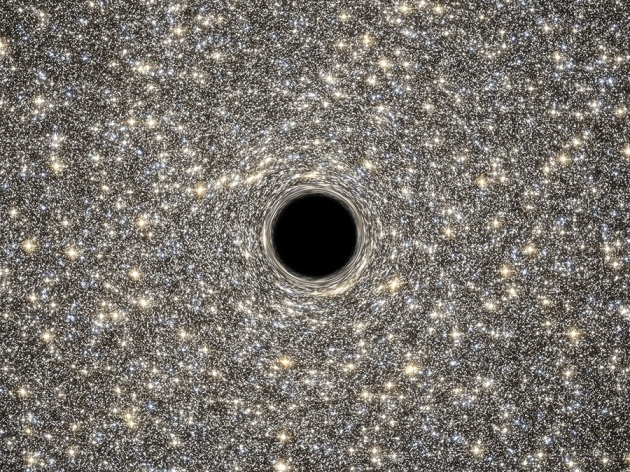Hawking’s latest black-hole paper splits physicists

NASA, ESA, D. Coe, G. Bacon (STScI)
A black hole, visualized here in the M60-UCD1 galaxy, was thought to lose information as it disappears.
Some welcome his latest report as a fresh way to solve a black-hole conundrum; others are unsure of its merits.
Davide Castelvecchi
27 January 2016
Almost a month after Stephen Hawking and his colleagues posted a paper about black holes online1, physicists still cannot agree on what it means.
Some support the preprint’s claim — that it provides a promising way to tackle a conundrum known as the black hole information paradox, which Hawking identified more than 40 years ago. “I think there is a general sense of excitement that we have a new way of looking at things that may get us out of the logjam,” says Andrew Strominger, a physicist at Harvard University in Cambridge, Massachusetts, and a co-author of the latest paper.
Strominger presented the results on 18 January at a crowded talk at the University of Cambridge, UK, where Hawking is based.
Others are not so sure that the approach can solve the paradox, although some say that the work illuminates various problems in physics. In the mid-1970s, Hawking discovered that black holes are not truly black, and in fact emit some radiation2. According to quantum physics, pairs of particles must appear out of quantum fluctuations just outside the event horizon — the black hole’s point of no return. Some of these particles escape the pull of the black hole but take a portion of its mass with them, causing the black hole to slowly shrink and eventually disappear.
See full text